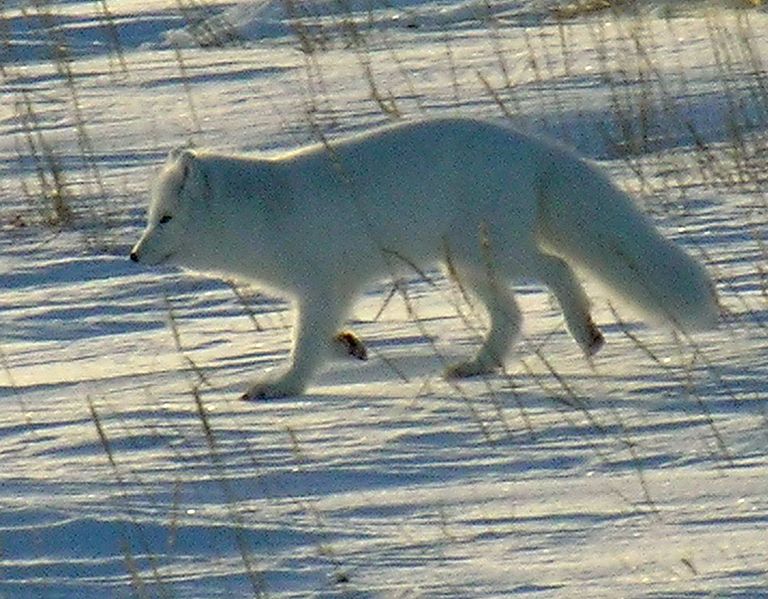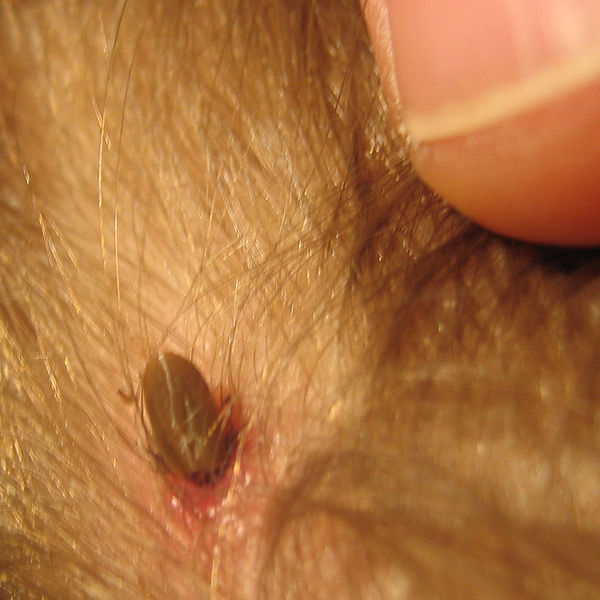Interactions
The musk ox interacts with a wide range of species ranging
from parasites to other large mammals. Since the musk ox isn’t
the only herbivores living in the arctic, competition takes
place between them and the Caribou for available vegetation
(Elder 2005).
Another interaction between musk ox and the environment would be concerning the shrubs it eats. When it eats, the musk ox’s
digestive system churns the nutrients out of it and leaves the
seeds to be secreted as waste in the environment. This secretion
allows the spreading of the shrubs seeds and is referred to as
mutualism. Another interaction that the musk ox has concerns
arctic foxes (Muskox 2014). The arctic fox follows around in the musk oxen
packed down tracks in the snow, which ultimately allows the fox
to travel around easier. This has a positive effect on the fox
but doesn’t harm the ox at all, so therefore the interaction
being exhibited is commensalism.
concerning the shrubs it eats. When it eats, the musk ox’s
digestive system churns the nutrients out of it and leaves the
seeds to be secreted as waste in the environment. This secretion
allows the spreading of the shrubs seeds and is referred to as
mutualism. Another interaction that the musk ox has concerns
arctic foxes (Muskox 2014). The arctic fox follows around in the musk oxen
packed down tracks in the snow, which ultimately allows the fox
to travel around easier. This has a positive effect on the fox
but doesn’t harm the ox at all, so therefore the interaction
being exhibited is commensalism.
Along with the three interactions listed above, the musk oxen
also portray parasitism
 in different ways. First of all, musk
oxen have been known to have a parasite called
Umingmakstronglyus pallikuukensis, or more commonly known
as a lungworm (Kutz 2001). They feed off of the internal structures of the
musk ox while creating massive infections causing their organs
to fail (Kutz 2001).This overall causes a decrease in the muskoxen
population while the lungworm has no effect at all. Another
parasitism relationshipthat occurs between them and another
organism is one more commonly known throughout the world: a
tick. The tick burrows under the multilayered fur of the oxen
and attach their pinchers to suck up blood (shown in the picture below). This effects the
musk oxen in a negative way and could also cause them to
contract certain diseases in their blood.
in different ways. First of all, musk
oxen have been known to have a parasite called
Umingmakstronglyus pallikuukensis, or more commonly known
as a lungworm (Kutz 2001). They feed off of the internal structures of the
musk ox while creating massive infections causing their organs
to fail (Kutz 2001).This overall causes a decrease in the muskoxen
population while the lungworm has no effect at all. Another
parasitism relationshipthat occurs between them and another
organism is one more commonly known throughout the world: a
tick. The tick burrows under the multilayered fur of the oxen
and attach their pinchers to suck up blood (shown in the picture below). This effects the
musk oxen in a negative way and could also cause them to
contract certain diseases in their blood.
Since they live in the arcic and they're such large mammals, one
would think they don't have to worry about predation, but that's
not the case. The calves are at risk against predators like the
arctic fox because of their age (Angier 2010). Since they're young, their fur
is not to its thickest potential and the horns that they use for
defense aren't
developed. This makes them vulnerable to the herds of arctic
foxes and their clever attacks. The arctic foxes first stalk the
herd of oxen to pick out the weak calves (Elder 2005). After that, they start
a full on attack on the herd and try to separate the calves from
their elders. Even if they do end up successful, it's not
necessarily the end of the battle. Musk ox's are very protective
over their young and will go through a little pack of wolves
just to regain a lost member of the herd (Elder 2005). Below is a video
showing an interaction between a herd of musk ox and a pack of
arctic wolves.
Musk Ox Save Calf from Wolves Video
Another form of predation that is common for the muskoxen is
being hunted by humans. Humans utilize the fur of the oxen and
use the horns to make tools out of (Elder 2005).
An uncommon form of predation that is seen in the arctic is an
interaction between the musk ox and the grizzly bear. Although
this is very rare, but below is a video that captures the
interaction that occured (WARNING: May be gruesome).
Example of
Musk Ox at the end of predation.